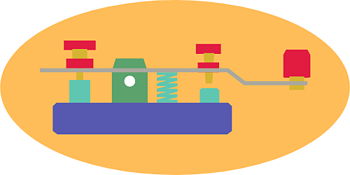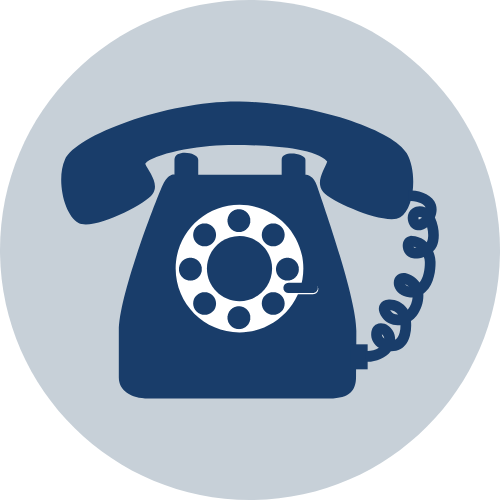The date was March 10, 1876, and the Scottish born American inventor, Alexander Graham Bell, was hard at work on his latest invention when a breakthrough with “the instrument” he was working on occurred. “Mr. Watson, come here – I want to see you!” Bell shouted to his assistant, Thomas Watson, from another room, out of earshot, within his office in Boston, MA. He had completed his desired results on his most successful experiment, the telephone. With those few words uttered over Bell’s prototype of a telephonic device, he made world history and changed the course of human communications forever.
The telephone has evolved quite a bit since the big debut. Today’s modern youth can’t even identify most fixed-line devices from only a few decades ago. We’ve come such a long way with phones and often we take today’s advanced smart devices for granted. Our iPhones and Androids provide us with so many options, apps, and resources. And, all of it is available to us with just a tap of the screen.
The history of the telephone is complex, enchanting and riddled with controversies. To better understand just how far we’ve come, let’s take a moment to look back at how the telephone was invented, how it became ubiquitous in the world today, and how it evolved into the smartphones we’ve all become accustomed to in our daily lives.
 As far back as the 1660s, telephone-resembling devices were being tested and developed by inventors. Mechanical acoustic devices used pipes and other materials to mechanically transmit music and speech over short distances. Renowned British physicist Robert Hooke is noted for inventing the acoustic string telephone in 1667, which resembled more of a tin can than the telephone. The device was much like the string and paper cup system you might have built to communicate with your siblings or friends when you were just a small child. Hooke used a taut string to connect two cans, which helped voice to be converted to mechanical vibrations and back to sound energy at the other end of the can.
As far back as the 1660s, telephone-resembling devices were being tested and developed by inventors. Mechanical acoustic devices used pipes and other materials to mechanically transmit music and speech over short distances. Renowned British physicist Robert Hooke is noted for inventing the acoustic string telephone in 1667, which resembled more of a tin can than the telephone. The device was much like the string and paper cup system you might have built to communicate with your siblings or friends when you were just a small child. Hooke used a taut string to connect two cans, which helped voice to be converted to mechanical vibrations and back to sound energy at the other end of the can.
In 1753, Scottish scientist Charles Morrison theorized that messages could be transmitted using different wires for each English letter. This theoretical telegraph resulted in an electrochemical telegraph which was created by Francisco Salva Campillo, a Catalan scientist. Later the electrical telegraph would first be implemented by the Great Western Railway in England, 1839. Around this same time, Samuel Morse patented his own electrical telegraph and eventually developed Morse code with the help of his assistant, Alfred Vail’s. Unfortunately, the telegraph was very limited in its use and methodology. One could only send a single message at a time using Morse code and users frequently experienced breakdowns.

Meanwhile, Bell tinkered with the idea of developing a device that could transmit sound via electric wires. On June 2, 1875, Bell discovered he could hear the sound over a wire while using his harmonic telegraph. Ten months later, he uttered that famous phrase to his assistant in the adjacent room over what is now recognized as the first telephone.
While many people such as Johann Philipp Reis, Tivadar Puskas, and Antonio Meucci worked on devices that resembled the telephone, only Bell has been credited with the feat of this invention. Bell was legally challenged by Elisha Gray, who developed a similar device within hours of Bell’s discovery. Though Bell won the legal case, the controversy surrounding this is still debated today.
How the Telephone Changed the World
It didn’t take long for the telephone to become commercialized. Bell’s father-in-law, who invested in many of Bell’s projects, established the Bell Telephone Company in 1878. Riddled with lawsuits for claiming a market monopoly, Bell Telephone Company would go on to become American Telephone and Telegraph. More commonly known today as AT&T.
In 1877, the first regular telephone line was installed between the towns of Boston and Somerville in Massachusetts. Just a few years later, in 1882, Leroy Firman obtained a patent for his telephone switchboard. And, by 1894 the telephone line between New York and Boston became fully operational. Thousands of connections were established. However, telephone connections were still limited to the wealthy and influential.
 At the turn of the 20th century, the rotary dial was invented. There was also the classic candlestick phones that were used primarily in the 1930s. You can find this model telephone in the Hollywood films of the 1930s and ’40s, but it was rarely found in use after the start of the 1950s. The candlestick telephone required a person to hold the mouthpiece separately from the receiver and took the shape of a candlestick. Hence the name. There was also the wall-mounted version of the candlestick phone. You may recognize both versions of this model in the 1940 film, His Gal Friday and the 1947 film, Good News.
At the turn of the 20th century, the rotary dial was invented. There was also the classic candlestick phones that were used primarily in the 1930s. You can find this model telephone in the Hollywood films of the 1930s and ’40s, but it was rarely found in use after the start of the 1950s. The candlestick telephone required a person to hold the mouthpiece separately from the receiver and took the shape of a candlestick. Hence the name. There was also the wall-mounted version of the candlestick phone. You may recognize both versions of this model in the 1940 film, His Gal Friday and the 1947 film, Good News.

By the early 1900s, telephones were regularly tapped for intelligence to be gathered during each World War. Phone-tapping, as it came to be known, became a regular feature of the Secret Services, law enforcement agencies, and governments across the world. The German Secret Police and the Soviet administrations regularly used phone or wire-tapping to spy on their citizens.
 A quick look at the history of film, popular music and literature reveals the extent of influence the telephone has had on human society even in the most remote corners of the world. As it was already mentioned, Hollywood films were filled with telephone dialogues that added to the mystique of the glamorous actors and actresses. Dynamic scenes were developed around the use of the telephone, building plot lines and leaving audiences in wonder.
A quick look at the history of film, popular music and literature reveals the extent of influence the telephone has had on human society even in the most remote corners of the world. As it was already mentioned, Hollywood films were filled with telephone dialogues that added to the mystique of the glamorous actors and actresses. Dynamic scenes were developed around the use of the telephone, building plot lines and leaving audiences in wonder.
The Development of Mobile Phones & the Future of Fixed Phone Lines
You might be surprised to learn that researchers were theorizing mobile phones as early as 1947. But hey, we shot for the moon and landed among the stars with this one. It took another three decades to get to where we wanted to be. It was in 1983 that the Motorola DynaTAC 8000X was released at a cost of $4,000. That’s right. Your read that number correctly. Nearly four decades ago it cost $4,000 to buy a mobile phone. It really makes you think about how cheap smartphones actually are these days. And, keep in mind, back then the Motorola DynaTAC 8000X didn’t have all those amazing features your mobile device has today.
In 1994, IBM Simon was launched and we could run software applications for the very first time. In the next few years, Nokia and Motorola launched several cellphones including the famous Nokia 3310. Palm Treo heralded a new era in 2002 when it became one of the first mobile phones to have the ability to send emails, which was soon followed by BlackBerry devices.
 In 2007, Apple launched the first iPhone which was a total game-changer. The humble telephone had metamorphosed into a hi-tech device that allowed its users to play games, listen to music, and even browse the Internet. Today, smartphones can do all those things and even more. The evolution of artificial intelligence or AI and machine learning has opened limitless opportunities for communication technology. Soon, we could be communicating through our wrists watches. Oh, wait, we’re already doing that. Well, you see my point. Just imagine what else we carry on our person that could become a two-way communication device. The possibilities are endless.
In 2007, Apple launched the first iPhone which was a total game-changer. The humble telephone had metamorphosed into a hi-tech device that allowed its users to play games, listen to music, and even browse the Internet. Today, smartphones can do all those things and even more. The evolution of artificial intelligence or AI and machine learning has opened limitless opportunities for communication technology. Soon, we could be communicating through our wrists watches. Oh, wait, we’re already doing that. Well, you see my point. Just imagine what else we carry on our person that could become a two-way communication device. The possibilities are endless.
Though smartphones have gradually replaced fixed-line telephones across homes, businesses continue to use fixed lines for a number of reasons. They are easier to integrate with enterprise software such as CRM and ERP and provide greater control to manage business calls and communication channels. Customer service teams across the world use a combination of fixed-line devices, internet, computers and advanced software programs to assist callers quickly and efficiently.
The Effects of Future AI and Emerging Technologies
The telephone certainly isn’t what it use to be. What seemed like a miracle well over a century ago is now considered a simple part of everyday life in modern society. Technology changes so rapidly the cellphone models that seemed revolutionary only a couple of years ago feel like the smoke signals of communication today.
The future of the phone will be shaped by data, artificial intelligence, and machine learning. The Internet has helped us to convert the telephone into a futuristic piece of technology that has quickly become an extension of ourselves. I mean, literally an extension of ourselves. We’ve all had that freakout moment when we couldn’t recall where we last put our phone down. It feels like an arm or a leg has been cut off.
 Thanks to textual analysis and natural language processing technologies, we expect enterprise telephones to evolve quickly and help business users further. And, with all these emerging technologies the way we communicate with each other is bound to change. However, time-tested etiquette of communication and displaying empathy to the ones we communicate with will never change. At Abby Connect, we embrace new and emerging technologies to help communicate with customers better. However, our basic philosophy of professional and empathetic customer service will never change.
Thanks to textual analysis and natural language processing technologies, we expect enterprise telephones to evolve quickly and help business users further. And, with all these emerging technologies the way we communicate with each other is bound to change. However, time-tested etiquette of communication and displaying empathy to the ones we communicate with will never change. At Abby Connect, we embrace new and emerging technologies to help communicate with customers better. However, our basic philosophy of professional and empathetic customer service will never change.
